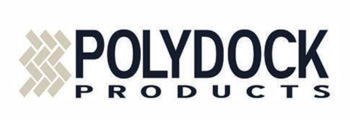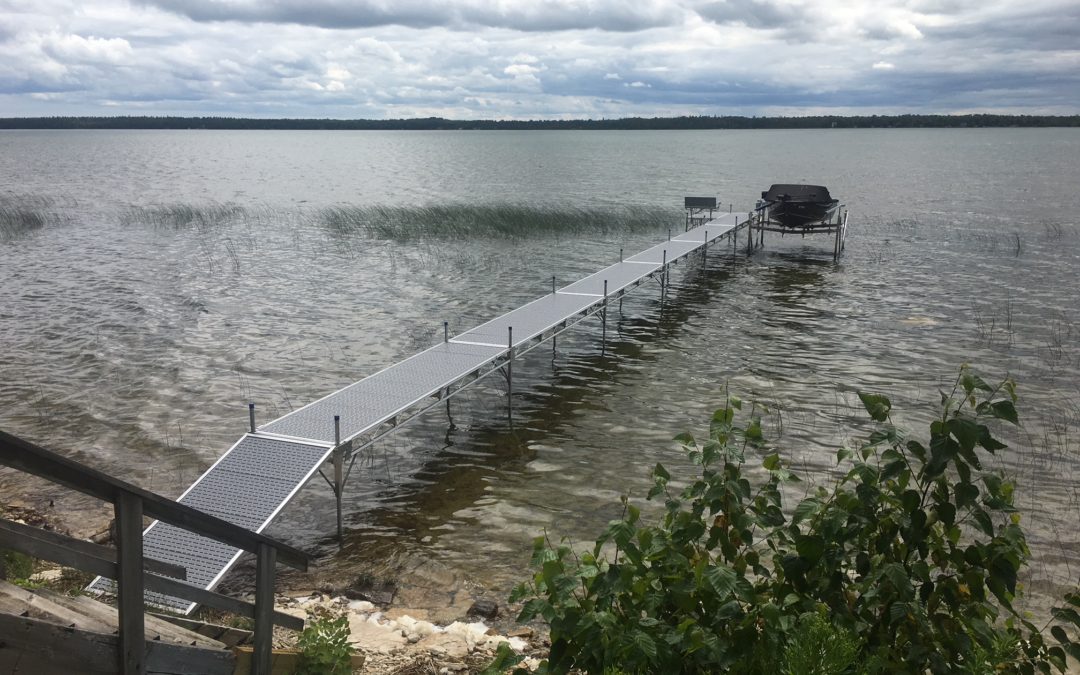
Apr 28, 2020
3 REASONS FOR A SHORTER DOCK
The high water again this year means that your dock and boat lift will once again be taking a beating. (see article)
Last year, some people insisted on putting their entire dock in. Additionally, they wanted their boat lifts at the end of the dock. We advised against this, and we will be asking again this year. Why do we recommend this?
THE LEGAL REASON
First, the Legal reason – the DNR restricts a dock from being in water depths deeper than necessary to float a boat. In the past, in some areas, this meant a dock could be 200′ long (with warning lights to alert boaters in the dark).
Even that 200′ dock was legal as long as it did not obstruct boat traffic. If the water levels were shallow, you had to go that far out to launch a boat in some areas.
Today, that same dock could be closer to 100′ (or less) due to the extremely high water.
NOW – THE PRACTICAL REASON
Second, the reason for a shorter dock this year is simple – The water is EVEN HIGHER this year. There is a better chance that your dock and boat will survive the storms.
NEXT, THE FINANCIAL REASON
Finally, do you want to save money as well as reduce the risk of damage to your dock & boat lifts? The cost of installation depends, among other things, on the actual time it takes to install your equipment. Often, fewer sections equate to lower costs.
What’s the alternative to a shorter dock?
Without your agreement, we had to install the full length. If you didn’t agree, we felt we had no choice but to replace the legs with longer legs. We had to do this to compensate for the higher water. But, this route results in higher costs for installation.
Some homeowners took us up on the shorter docks in the hope that the water would go down in 2020. It didn’t! Others opted for lengthening the legs.
From our standpoint, it requires more time to replace the legs with longer ones than to shorten the dock.
So – What Happened?
Some docks did not have longer legs put on, and we installed the entire length. Still, they survived. If this was your dock, feel fortunate.
For those who did NOT allow us to do one of these alternatives, we will be asking you to choose again this year. Remember, the water is even higher this year.
We would prefer to leave one or two sections uninstalled this year. The alternative, we will request that you allow us to put longer legs on your dock. Our goal is simple – we want to limit damage to your dock.
Also remember, with longer legs, your dock may have more “sway” to it. If that happens, we recommend sway braces.
Even with longer legs, we will ask you to move your boat, and jet ski lifts closer to the shore. This will help protect them from the waves. The lifts have limited leg lengths (without getting longer legs). Your boat could pay the price if we don’t use one of these alternatives.
NEW – this year!
This year PWS has another alternative that was not available in the past. Talk to Jerry about trading your dock for the new 3-Season Pier, which we are now offering.
This new steel dock can handle storms better due to it’s greater weight and the “open” decking we use. Combining these two features makes it the heaviest pier on Green Bay. It has survived installations on Lake Michigan also.
Tell Your Friends & Family
Have friends or neighbors you believe should see this article? Email them this link – and Thank you!
Don’t Forget – Considering rip-rap for your shoreline? PWS is the place to contact!
PWS is open for business as usual. Practicing “Social Distancing”? We do business by phone and emails also.
Where is Pier & Waterfront Solutions?
Located at 7325 St. Hwy 57, it’s 3 miles south of Sturgeon Bay, and 1 mile past the intersection of Cty MM (heading north). Look on the right side, one mile north, at the next intersection (Idlewild Road and Hwy 57).
ARE WE OPEN?
During this time of uncertainty, Pier & Waterfront Solutions is staying “open.” We have implemented measures to ensure the safety of our employees and visitors. At the same time, we are working to maintain the trusted service that you have come to expect.
We are implementing these precautionary measures:
1. Conducting as much business as possible by email, text, or phone.
2. Site visits will continue but with limited in-person meetings. When in-person contacts are necessary, we will follow “social distancing” guidelines.
3. Our display yard is always open for you to examine at your leisure. All displays have a numbered, red tag on them. If you want more information or pricing, please reference that number.
Is there More?
4. Some employees will be working remotely, but they are always available by phone.
5. Any employee with symptoms or illness is sent home.
6. We continue to provide estimates and invoices by email to make the process paperless.
7. Crew starting times are being staggered to limit social interactions.
8. We keep the same crews together to limit cross interactions.
With these measures, we hope everyone will stay safe, and we will be back to normal operations soon.
What can you do to help us?
1. Please conduct as much business as possible via emails, messaging, and emails. This step protects everyone involved.
2. When you see our crews installing equipment, please practice “social distancing.”
Thank you for allowing us to work with you.
So – YES – ARE WE OPEN?
Please call, message, or email us with any questions.
Let’s all stay safe!
Contact:
Jerry @ (920) 493-4404 or Jerry@wisconsinpws.com – Commercial work & new/used Sales.
Dave @ (920) 905-2588 or Dave@wisconsinpws.com – Erosion control & shoreline work.
John @ (920) 493-4405 or John@wisconsinpws.com – Scheduling & Service work
Apr 21, 2020
What happened to Lake Michigan water levels?
Water levels continued to rise on Lake Michigan in February, and it dropped 1″ in March*.
According to the US Army Corps of Engineers, Detroit district, “February was drier across most of the Great Lakes. However, water levels remain above record highs for this time of year”. In reality, February saw another two-inch increase compared to February of 2019.
We projected a 10″ rise in water levels year to year. We missed that mark. It rose 14 inches, which represents 11 trillion gallons more water in the Lake Michigan-Huron water system since last year. Believe it or not, that included the 1″ drop in March.
Water levels usually peak in late summer or early Fall. At present, the Army Corps predicts the water level will continue to rise another 1-5″ before Fall.
With the high water levels, you should expect stronger storm action in the summer months. With this action, there will be more erosion along the exposed shorelines.
What can you do to protect your property from rising water levels?
There are TWO things you can do:
- Install rip-rap to help protect your shoreline. Residents of the Door County peninsula already trust PWS to do a professional job. Call Dave @ (920) 905-2588; and
- Look at the new 3-Season Pier. Call Jerry @ (920)-493-4404.
PWS is all about SOLUTIONS!
Tell Your Friends & Family
Have friends or neighbors you believe should see this article? Email them this Link – and Thank you!
Visit Pier & Waterfront Solutions on Facebook also.
Where is Pier & Waterfront Solutions?
Located at 7325 St. Hwy 57, it’s 3 miles south of Sturgeon Bay, and 1 mile past the intersection of Cty MM (heading north). Look on the right side, one mile north at the next intersection (Idlewild Road and Hwy 57).
ARE WE OPEN?
During this time of uncertainty, Pier & Waterfront Solutions is staying “open.” We have implemented measures to ensure the safety of our employees and visitors. At the same time, we are working to maintain the trusted service that you have come to expect.
We are implementing these precautionary measures:
1. Conducting as much business as possible by email, text, or phone.
2. Site visits will continue but with limited in-person meetings. When in-person contacts are necessary, we will follow “social distancing” guidelines.
3. Our display yard is always open for you to examine at your leisure. All displays have a numbered, red tag on them. If you want more information or pricing, please reference that number.
Is there More?
4. Some employees will be working remotely, but they are always available by phone.
5. Any employee with symptoms or illness is sent home.
6. We continue to provide estimates and invoices by email to make the process paperless.
7. Crew starting times are being staggered to limit social interactions.
8. We keep the same crews together to limit cross interactions.
With these measures, we hope everyone will stay safe, and we will be back to normal operations soon.
What can you do to help us?
1. Please conduct as much business as possible via emails, messaging, and emails. This step protects everyone involved.
2. When you see our crews installing equipment, please practice “social distancing.”
Thank you for allowing us to work with you.
So – YES – ARE WE OPEN?
Please call, message, or email us with any questions.
Let’s all stay safe!
Contact:
Jerry @ (920) 493-4404 or Jerry@wisconsinpws.com – Commercial work & new/used Sales.
Dave @ (920) 905-2588 or Dave@wisconsinpws.com – Erosion control & shoreline work.
John @ (920) 493-4405 or John@wisconsinpws.com – Scheduling & Service work
*Credits: MLive and Huron Daily Tribune
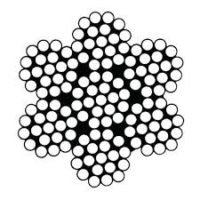
Mar 17, 2020
Wire Rope Lubricants
Wire rope lubrication is critical to extending the life of a cable (often referred to as the “lift cable”). How significant is it? Failure to complete this simple maintenance can reduce wire rope life by up to 50%.
Tell me more!
A wire rope consists of wire strands wound around a central core, then again wound around themselves to form a wire rope. The center may consist of steel or even plastics. Here are just some of the MANY different configurations for a wire rope.
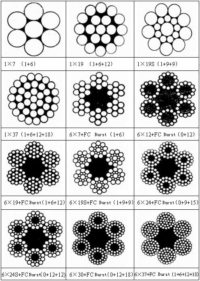
Wire Rope Configurations
The use of a small strand size is better suited to bending around small sheaves (pulleys). Taken to an extreme, a wire made of one thick “strand” would not be able to go around a pulley.
Many small strands allow the wire rope to bend easily around the pulleys. In doing so, the strands “rub” against each other, causing friction. Over time, friction rubs any external coatings off the wire rope.
How are the wire rope strands protected against rust?
Uncoated wire rope strands left “uncoated” will rust from exposure to moisture in the air;
The cable strands get a coating of zinc for rust protection (called galvanizing). The steel strands travel through a hot zinc bath to coat the surface with rust protection. The “con” to galvanized cables – the surface does not regenerate when damaged.
What about stainless steel cables?
In simplest terms, when molten high carbon steel mixes with chromium, it forms stainless steel. When in contact with air, the chrome restores the anti-rust properties. The “con” side – it gives up small amounts of strength.
What function does lubricating a wire rope perform?
Wire rope lubricants;
1. Reduce friction in the layers of the wire rope as they move over other layers. It’s true for galvanized & stainless steel cables both; and
2. Lubricants provide corrosion protection and lubrication in the core of the cable. Less rust and friction means longer life for the cables.
Are there different lubricants used?
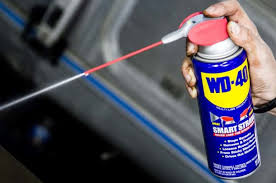
Boat Lift Cable Lubrication
There are different types of wire rope lubricants – penetrating and coating. Solvents in penetrating oils carry a lubricant into the core of the wire rope. When the solvent evaporates, it leaves behind a lubricating film to protect the strands.
“Coating” lubricants (grease) barely penetrate a cable. The coating seals the outside of the cable from moisture and reduces wear and corrosion. But, it also seals moisture inside the cable, thus promoting the rusting process.
PWS recommends only penetrating lubricants.
Most wire ropes fail on the inside first. It is vital to ensure that the center core receives enough lubrication. Repeated applications over a day are a good idea.
It is best to apply short bursts of spray lubricant on the top cables wound around the drum. Spray across the top of the wires to get the best penetration and protection. The rope strands tend to separate slightly due to bending around the winch drum. This separation allows the lubricant better access to the core of the wire rope.
Four Rules to follow:
- Do not apply a grease lubricant on a boat lift cable;
- Never change the diameter of the lift cable;
- Never substitute a different wire construction; and
- Do not replace stainless steel cables with galvanized cables.
Experience suggests that life cycles may double with lubrication. But remember, there are other factors affecting wire rope life also.
PWS attributes the increase in the life cycle to the use of penetrating oil to displace water and decrease friction. The oil reduces the wear and corrosion occurring inside the rope. Spraying with a penetrating lubricant acts like an oil change for cars. You’d never allow your vehicle to run out of oil. Right?
The savings from lubrication versus replacing a lift cable are considerable.
What else can damage a boat lift cable?
Improper winding and shock loading with heavy loads damage the cables. These actions will speed up wear and corrosion. See this link.
WHAT ABOUT MY BOAT LIFT?
In a previous post, we explained the danger to boat lift cables if the waves hit the bottom of your boat. We also demonstrated what defective wires look.
7 x 7 cable construction
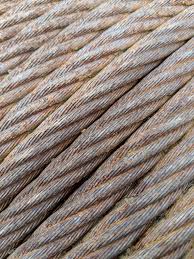
Rust on galvanized cable
Once again, here are the warning signs of defects in your cables.
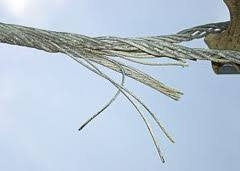
Broken Strands
If your cable looks like any of these, it’s time to replace them.
Warning – It is possible to break strands inside a cable without any exterior signs of damage. This situation is especially true on stainless steel cables which do not rust. If you see “rust” on a stainless steel cable, it is from the winch drum depositing rust in the winding process.
Visit Pier & Waterfront Solutions on Facebook also.
Tell Your Friends & Family
Have friends or neighbors you believe would like to see this article? Email them this link – they’ll thank you!
Where is PWS?
You will find us at the intersection of Idlewild Road and Hwy 57 in Door County. The address is 7325 St. Hwy 57, Sturgeon Bay. That’s 3 miles south of Sturgeon Bay, and 1 mile north of the intersection with Cty MM.
Our staff looks forward to serving ALL your waterfront needs.
Contact:
Dave @ (920) 905-2588 or Dave@wisconsinpws.com – erosion control and shoreline work.
Jerry @ (920) 493-4404 or Jerry@wisconsinpws.com – commercial work and new & used Sales.
John @ (920) 493- 4405 or John@wisconsinpws.com – Scheduling & Service work.
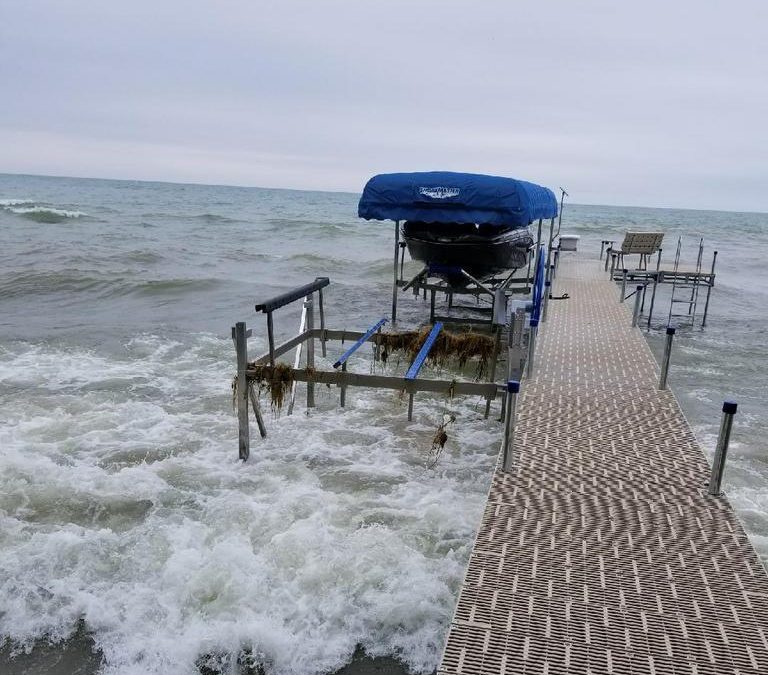
Sep 3, 2019
It’s time to think – winter storage.
It seems like just yesterday when the days began getting longer and the temperatures were rising. Now the temperatures are rapidly falling and the days are getting shorter.
Labor Day has come and gone. Traditionally, it signals the end of summer. Many people are shutting down their summer retreats and preparing them for winter storage. They are packing up and heading home. We have people from all over the country – from Florida to California and many places in between.
The Door County peninsula is a favorite retreat for many people, including Bear fans. We’ll see many of you in a few days – Sept 5th (Packers vs. Bears)
In the meantime, we hope that you will remember to call John (920-493-4405) and let him know when you are ready for the removal of your equipment. (i.e., your boat is off your lift).
While you are busy closing up your retreat, our crews are once again removing docks and boat lifts for winter storage. The water cools off quickly, and they have to go into it daily. We want to avoid working in the morning ice this year.
What can you expect this year?
The farther we get into September, the bigger the storms become. When a storm is in the forecast, we can’t respond fast enough to get everyone out of the water. Once a storm hits your equipment, there is nothing we can do except to wait it out. If there is widespread damage along the Door County shoreline it takes time to get to everyone.
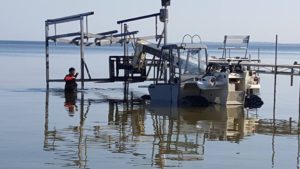
Preparing for winter storage
Our equipment can go into about 4 feet of water (the operators’ cab is flooding at that point). Our crews get more than wet feet when that happens.
The sooner you notify us that you are ready, the better the chances we have to get your equipment out of the water.
Due to the potential for big storms, we try to handle the Bay first and then the inland lakes.
What should change this Fall?
We recommend that you allow us to place your equipment further up on your property. Why?
Due to the substantial damage encountered in the Spring of 2019. We understand that it may look unsightly and it’s difficult to cut the lawn under it. Plus, there may appear to be dead spots under the footpads in Spring. However, nature recovers quickly. Isn’t that better than what you see here?
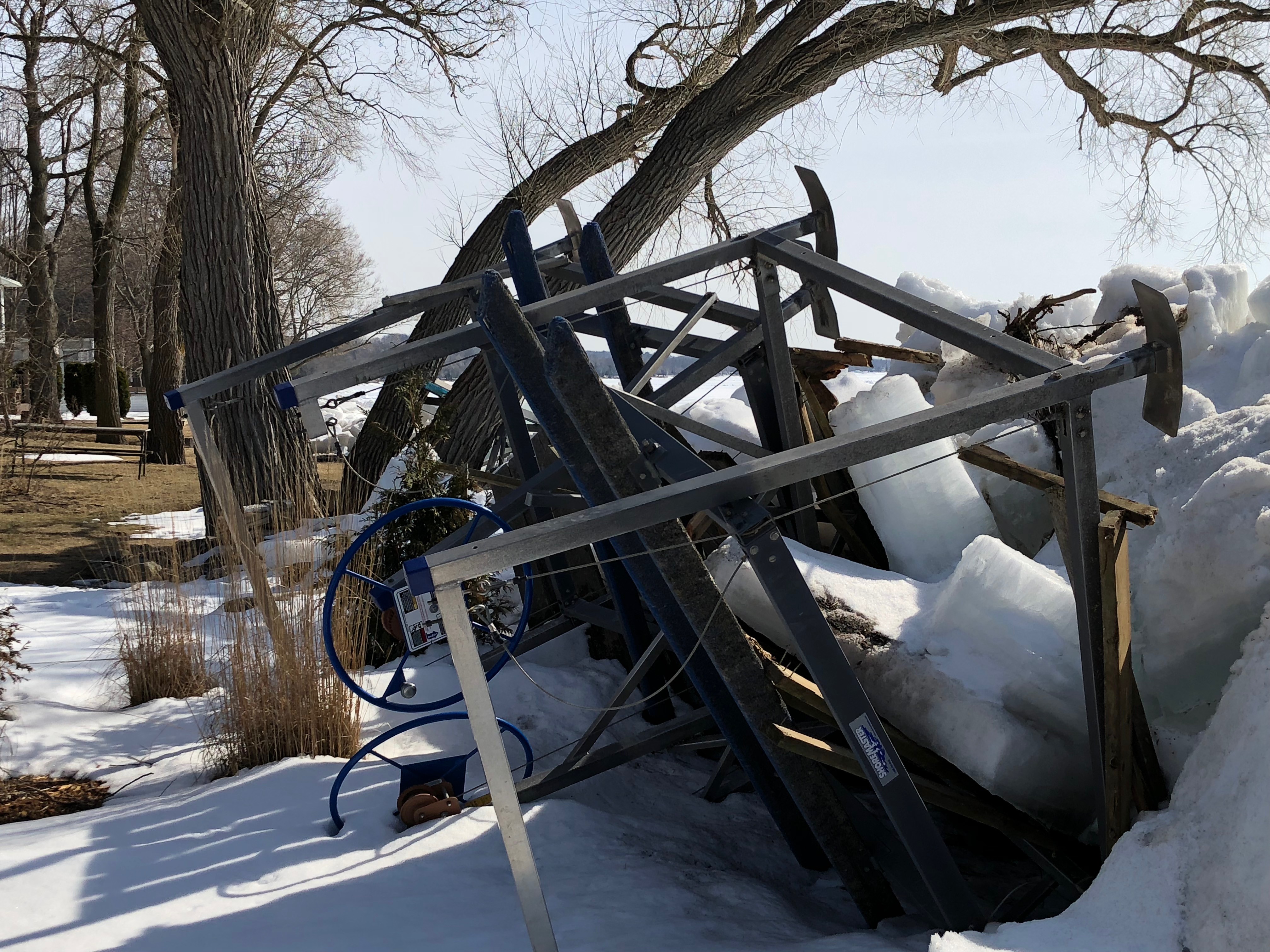
Wrong winter storage
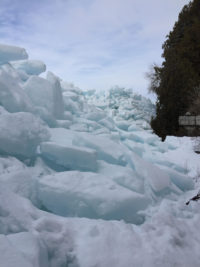
Ice Shove
In some cases, the ice moved more than 50 feet up on to the shore and lawns. In one case right into the house.
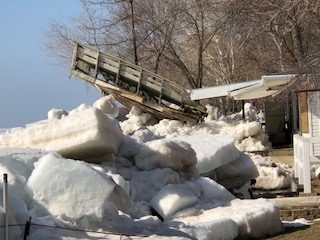
Crushing a deck and house
These are just some of the winter conditions we can expect each year. With the high water this year we expect to see even more of this in the Spring of 2020.
Remember
Pier & Waterfront Solutions (PWS) specializes in all ShoreMaster docks, lifts, and accessories.
We are located in the center of Door County at 7325 St Hwy 57, just south of Sturgeon Bay at the intersection with Idlewild Road. Our staff looks forward to serving all of your waterfront needs.
Call Jerry at 920-493-4404 or Email Jerry@wisconsinpws.com for more information.
Aug 20, 2019
Cable Maintenance
In last weeks article, (https://wisconsinpws.com/boat-lift-cable/) we discussed why your boat lift cable would not last forever.
This week we get into more detail and explain what you can do. We discuss the most critical causes of cable problems and what you can do to protect them.
There are two types of cable material used for boat lifts:
- Galvanized; and
- Stainless steel.

Rust on galvanized cable
Galvanized Steel is made of carbon steel which on its own is not resistant to rust. It is made corrosion resistant by running the cable through a hot bath of molten zinc. As long as the coating is on the wire “fibers,” it will resist the formation of rust.
Stainless Steel is also made of carbon steel. However, when mixed with about 10% chromium, it will form a stainless steel cable. It resists oxidation or corrosion. The chromium in the steel forms a layer of chromium oxide that promotes resistance to corrosion.
When the stainless steel wire is exposed to oxygen, the protective coating will REGENERATE. The anti-corrosion protection of the chromium maintains the resistance of the steel to rust.
Galvanized steel is less expensive than stainless steel due to the differences in the processing of each. Galvanized steel is durable, and each cable is sized to handle the loads created by your boat lift.
No – you can NOT increase the boat lift rating by merely increasing the size of the cable used. If you simply increase the diameter of the cable, you must also increase the size of the drum, or you risk early failure. The larger wire is stiffer and cannot bend around a smaller drum without damage.
Keep this information in mind if a neighbor or visitor wants to put their boat on your lift when it is empty. Know the weight of the new boat.
See https://wisconsinpws.com/boat-lift-calculations-part-4/ for additional information about cable maintenance.
Boat Positioning
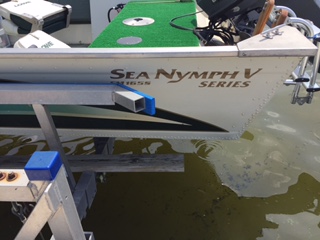
Boat stern overhanging too far
Make sure your boat is positioned correctly on the lift. If it’s not far enough forward, it will put excessive weight on the rear cables and the frame structure. On the other hand, if the boat is too far forward, you may damage the lower motor assembly or break the front cables due to excess weight.
In general, a boat has most of its weight at the stern where the motor is. As a result, to maintain proper balance on your lift, the boat stern should be about 6″ to12″ from the lift rack. See the above article for more information.
When properly balanced, the weight is evenly distributed across the lift rack. A balanced boat prevents overloading one end of the lift.
Note – unusually long boats, may be an exception to the 6-12″ rule. You must be especially careful to find the proper balance. Proper balance will minimize potential damage to the cables.
To summarize, take care of your cables, and they will last for years.
What Cable Maintenance Can I do by myself?
1. Make a visual inspection of the cables regularly. It is helpful to do this when the lift rack is in its lowest position to expose more cable. Look for chafing, corrosion or a flat cable especially near the winch box.
Don’t forget – do this inspection with leather gloves on to protect your hands.

Boat Lift Cable Lubricant
2. At the beginning of the boating season, be sure to apply a burst of penetrating oil to the top of the cables around the winch drum. The penetrating oil will work its way down the wires as needed. Raise the rack halfway up and carefully apply another burst of penetrating oil to the winch drum. NEVER use grease on the cables. It traps moisture inside the strands. Do not be afraid to do it more often during the summer months, if you use the boatlift frequently.
Most quality lifts use Stainless Steel cables for a majority of cables and (1) galvanized cable as the main winch cable.
3. Watch the winch drum to ensure that the cable is wrapping smoothly on the drum.
Stainless steel lift cables also benefit from penetrating oil. We recommend this procedure in Spring, halfway through the boating season and again in Fall after removal.
To summarize, take care of your cables, and they may last for years. Remember, the cables and the winch do all the “work” on your lift. They do the lifting by raising the rack assembly with the weight of the watercraft on it. That’s a lot of weight so the cables must be well maintained.
In Conclusion
In Spring and Fall (and at least once during the summer months), put a short blast or two of PENETRATING oil on the cables wrapped around the winch drum from the top of the winch. Do not soak the wire until it drips when in the water. You don’t want to contaminate the water. Use only penetrating oil as the lubricant.
NEVER use grease (it traps the moisture inside the cable accelerating its deterioration).
Cable maintenance begins with inspecting cables for frays and rust – Caution – wear leather gloves to prevent injury to your hands. Check near the top of the winch cable as this is the most common area for frays. Replace as needed, if corrosion is present.
Check the alignment of all cables on the pulleys. Simply follow the cables down until they wrap around a pulley. Are they On a pulley or is the cable off to one side? Call PWS if they are.
With your watercraft on the rack – check for any slack in the cables. All cables should be equal in tension. Contact PWS for adjustment, if needed.
Look for cable corrosion near the winch with the rack fully down (but without slack in the lifting cables.
Remember, the cables and the winch do all the “work” on your lift. They do the lifting by raising the rack assembly with the weight of the watercraft on it. That’s a lot of weight so the cables must be well maintained.
Remember
Pier & Waterfront Solutions (PWS) specializes in all ShoreMaster docks, lifts, and accessories.
We are located in the center of Door County at 7325 St Hwy 57, just south of Sturgeon Bay at the intersection with Idlewild Road. Our staff looks forward to serving all of your waterfront needs.
Call Jerry at 920-493-4404 or Email Jerry@wisconsinpws.com for more information.















